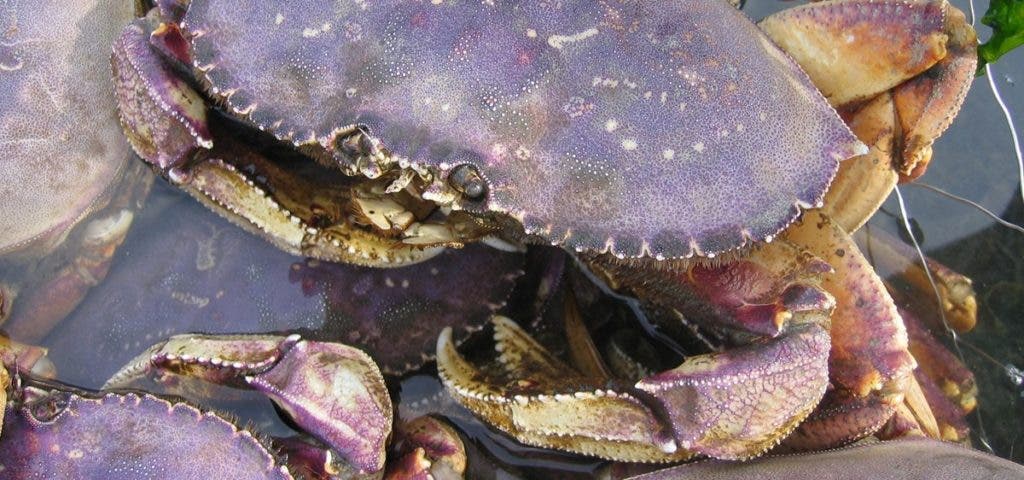
As concentrations of atmospheric carbon dioxide continue to rise steeply so will the oceans’ acidity, as some of the gas is absorbed by the water. Researchers at the National Ocean and Atmospheric Administration (NOAA) have now found that the acidity around the Pacific Ocean coast is so high that it’s eating away the shells of young Dungeness crabs.
“If the crabs are affected already, we really need to make sure we start to pay attention to various components of the food chain before it is too late,” said Nina Bednarsek, the lead author of the new study.
No one expected to see this kind of threat to Dungeness carbs escalating so quickly, a situation which is now seen as a warning for the future of seafood and the health of marine life in general. If crabs are already severely affected, other animals in the food chain are likely feeling the heat and lowered pH as well.
Dungeness crabs (Cancer magister) occur throughout the coast of Oregon, Washington, and British Columbia. Their contribution to the fishing industry is estimated at $200 million annually.
However, researchers were stunned to find that acidification in the waters where the crabs swim is high enough to chip away at their shells. Since 2016, NOAA researchers have been collecting samples using research boats to study the phenomenon.
Ocean acidification occurs when the pH of ocean water drops due to the absorption of CO2 over a long period, which triggers a chain of chemical reactions. Ultimately, the CO2 causes an increase in hydrogen ions which overbear carbonate ions. Like corals and other crustaceans, Dungeness crabs rely on carbonate ions to grow thick shells. Without enough carbonate, crabs, oysters, and clams cannot build their shells properly and thus become more vulnerable to predation.
Since the industrial revolution, the average pH in the world’s oceans has dropped from 8.2 to 8.1, marking a 26% increase in acidity.
The Dungeness crab larvae samples collected by the NOAA researchers included shells with clear signs of scarring and abnormal ridging, which impair the crab’s ability to swim and stay buoyant. Many of the crabs with damaged shells were also smaller than they should have been, a mark of development delays. Lower pH levels also seem to have destabilized the crab larvae’s mechanoreceptors, causing some to risk the loss of important sensory and behavioral functions.
Previously, researchers showed that ocean acidification is impacting the population numbers of West Coast pteropods. These free-swimming snails are on top of the menu for Dungeness crabs, suggesting that the entire marine food chain is being significantly affected.
This sort of outcome is not surprising. What was unexpected, however, was seeing the damage happening now rather than years from now.
Next, scientists would like to conduct more research in order to make new predictions about how Dungeness crabs and other marine life will cope with rising ocean acidity in the future.
The study was published in the journal Science of the Total Environment and funded by the federal National Oceanic and Atmospheric Administration.









